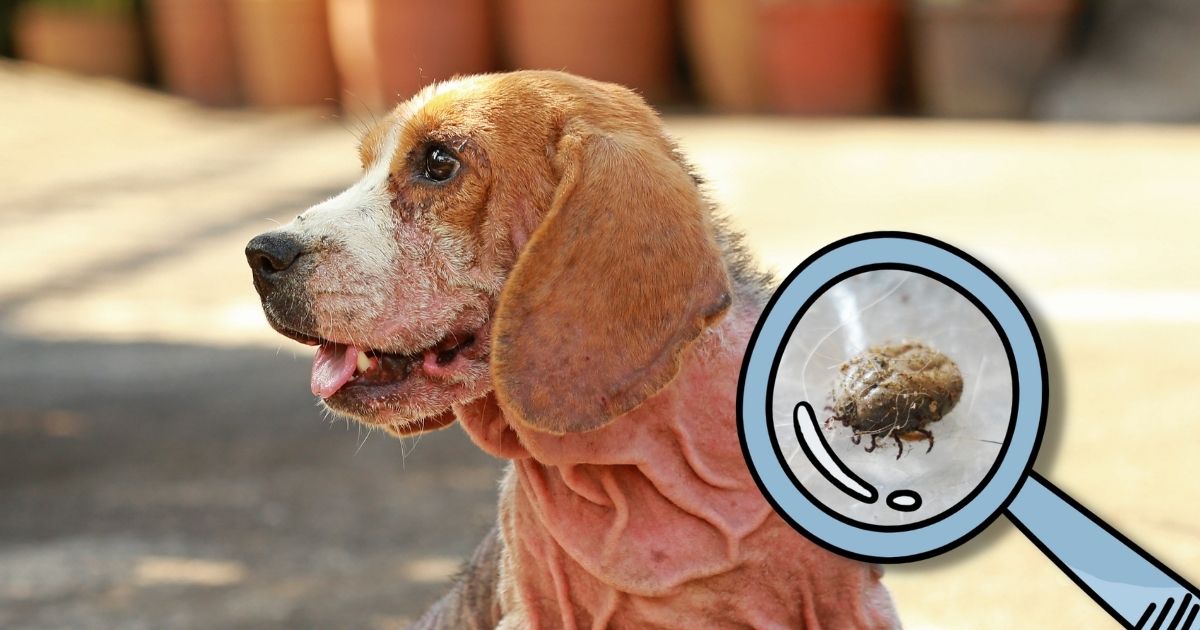
Dog Mange: Causes, Symptoms, and Successful Treatment
December 08, 2023Dogs hold a cherished place in countless households, making their health and happiness a top priority. One health issue that can affect our furry companions is mange. Mange in dogs is a skin condition caused by mites that can lead to discomfort and distress if left untreated. In this article, we'll explore what mange is, how dogs contract it, its symptoms when seeking veterinary care, and what to do if your dog is diagnosed. Additionally, we'll discuss the role of salmon oil in managing and preventing mange.
What is Mange in Dogs?
Mange is a skin disease in dogs caused by microscopic parasites called mites. These tiny creatures can take up residence in your dog's skin and hair follicles, leading to a variety of skin issues. Dogs have two primary types of mange: Sarcoptic mange (also known as scabies) and Demodectic mange (demodicosis).
How Do Dogs Contract Mange?
Sarcoptic Mange (Scabies)

This type of mange is highly contagious and is often transmitted from one dog to another through direct skin contact. It can also spread indirectly through bedding, grooming tools, or any surface an infected dog has encountered. Sarcoptic mange is not hereditary, but some dogs may have a genetic predisposition to a weaker immune system, making them more susceptible.
Demodectic Mange (Demodicosis)

Demodectic mange is caused by Demodex mites that naturally inhabit a dog's skin. It is not usually contagious and is often linked to an underdeveloped or compromised immune system. While genetics play a role in demodectic mange, it doesn't mean that every dog with a genetic predisposition will develop the condition.
Symptoms of Mange in Dogs
Identifying the mange in your dog is crucial for early intervention. The usual signs of mange in dogs include:

- Intense Itching: Dogs with mange often experience severe itching, leading to scratching, biting, and chewing on affected areas.

- Hair Loss: Mange can cause hair loss, giving the dog's coat a patchy and unkempt appearance.

- Redness and Inflammation: The affected skin may become red, inflamed, and develop crusts or scabs.

- Sores and Lesions: Pustules and open sores may form due to constant scratching and biting.

- Restlessness: Dogs with mange may become restless, irritable, and have trouble sleeping due to the discomfort.

- Weight Loss: In severe cases, a dog's overall health may deteriorate, leading to weight loss and lethargy.
When Should You Seek Veterinary Care for Mange in Dogs

If you notice any of the symptoms mentioned above in your dog, it's crucial to consult a veterinarian promptly. Mange can worsen without treatment, leading to secondary bacterial infections or more severe health issues. Your vet can diagnose mange through skin scrapings and recommend the appropriate treatment.
What to Do If Your Dog is Confirmed with Mange

Once your dog is diagnosed with mange, your veterinarian will prescribe treatment, typically involving medicated baths, topical ointments, or oral medications to eliminate the mites and alleviate the symptoms. Your vet may also recommend antibiotics or steroids to address secondary infections or inflammation in severe cases.
Improving Your Dog's Skin Health

Maintaining your dog's overall health can help prevent and support healing if they contract it. One way to enhance your dog's skin health is by adding salmon oil to their diet. Salmon oil for dogs is rich in omega-3 fatty acids, which have anti-inflammatory properties and can help soothe irritated skin. Additionally, omega-3 fatty acids promote a healthy coat and skin, reducing the risk of skin conditions like mange. Consult your veterinarian before adding supplements to your dog's diet to ensure it's appropriate for their needs.
Conclusion
Mange is a treatable condition, but early detection and proper care are essential for a swift recovery. If you suspect your dog may have mange, consult your veterinarian immediately. By understanding the causes, symptoms, and treatment options for mange, you can ensure the well-being of your furry friend and enjoy many more happy, healthy years together.
